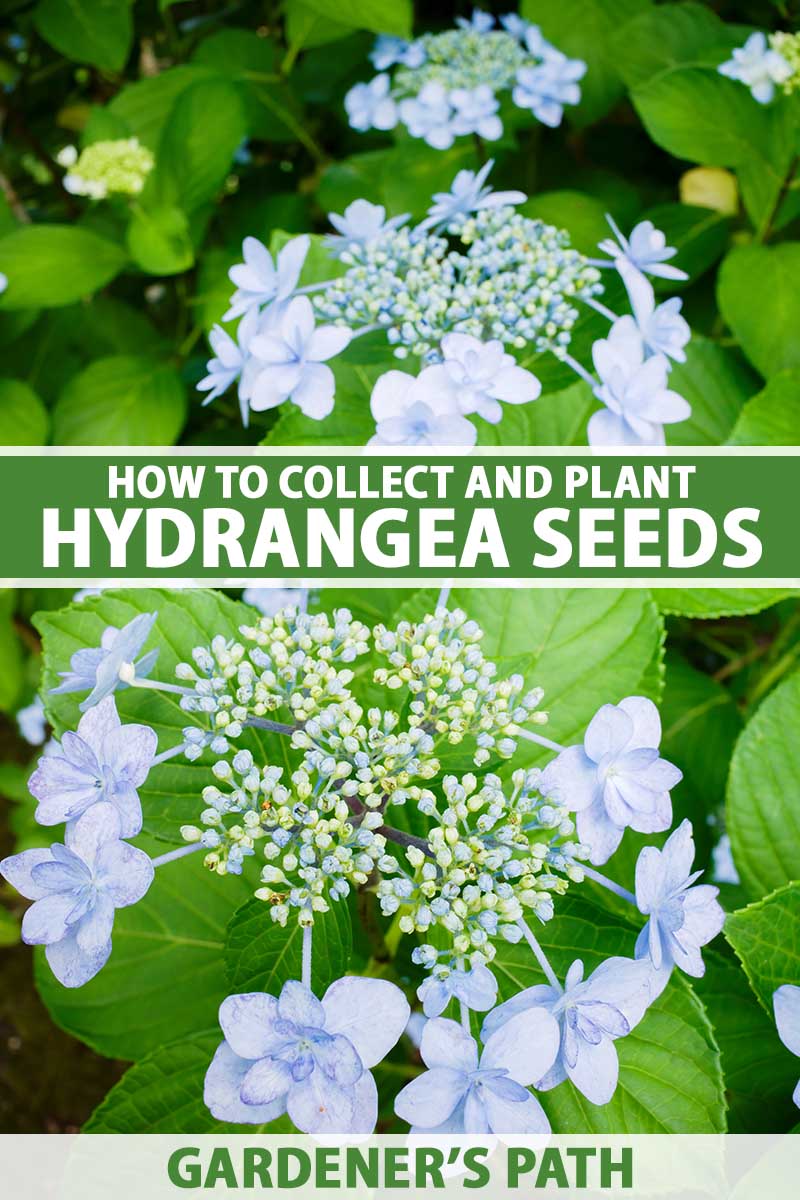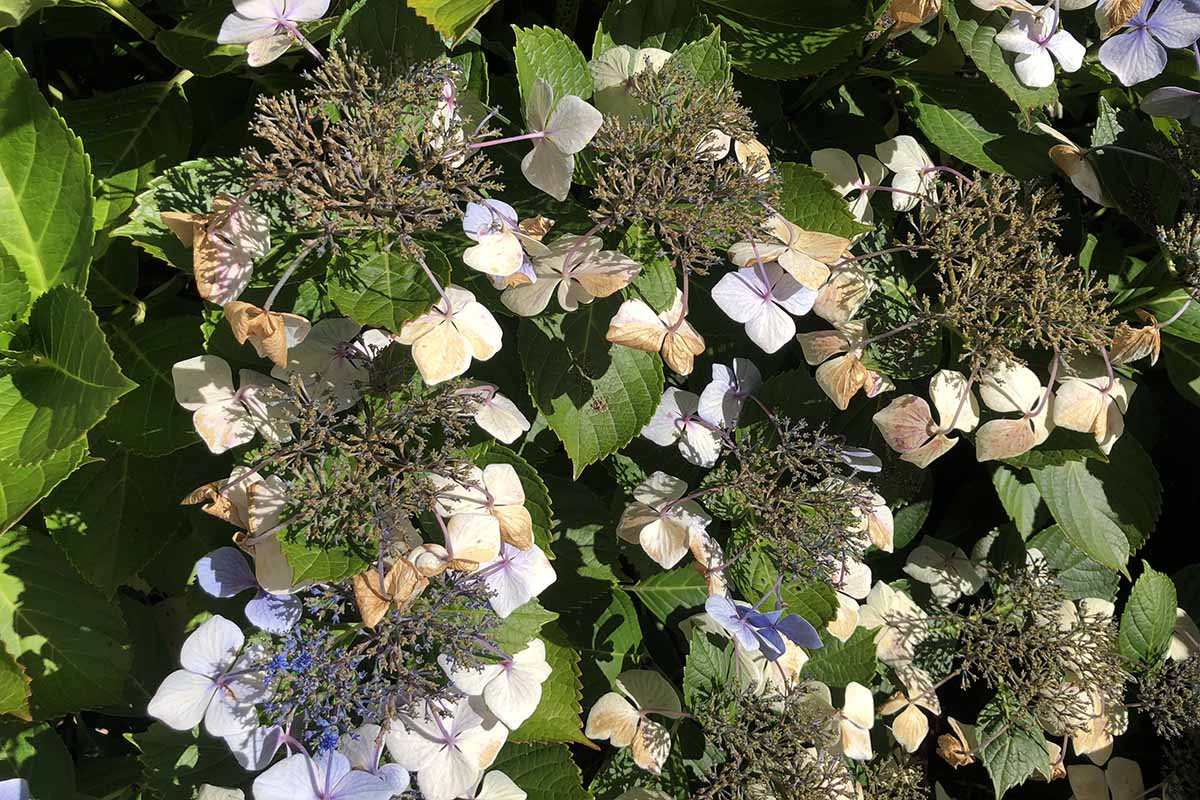Grow Your Own Hydrangeas From Seed: A Stepbystep Guide
Grow Your Own Hydrangeas From Seed: A Step-by-Step Guide
Hydrangeas are beautiful flowering shrubs that can add a touch of elegance to any garden. They come in a variety of colors, including blue, pink, white, and purple. And, they are relatively easy to grow from seed.
If you're interested in growing your own hydrangeas from seed, here is a step-by-step guide:
1. Gather your supplies.
You will need the following supplies:
- Hydrangea seeds
- Potting soil
- Seedling trays or pots
- Watering can
- Plastic wrap
- Light source
2. Prepare the seedbed.
Fill your seedling trays or pots with potting soil. The soil should be well-drained and moist.
3. Sow the seeds.
Sprinkle the hydrangea seeds on top of the potting soil. Do not bury them.
4. Water the seeds.
Water the seeds lightly. You do not want to overwater them.
5. Cover the seedbed with plastic wrap.
This will help to keep the seeds moist and warm.
6. Place the seedbed in a warm, sunny location.
The ideal temperature for germinating hydrangea seeds is 70-75 degrees Fahrenheit.
7. Keep the seedbed moist.
The soil should be kept moist, but not soggy.
8. Germination.
Hydrangea seeds typically germinate in 2-4 weeks.
9. Remove the plastic wrap.
Once the seeds have germinated, you can remove the plastic wrap.
10. Care for the seedlings.
The seedlings will need to be watered regularly and kept in a warm, sunny location.
11. Transplant the seedlings.
Once the seedlings are 2-3 inches tall, they can be transplanted into larger pots or the garden.
12. Fertilize the seedlings.
Once the seedlings are transplanted, they can be fertilized every few weeks with a balanced fertilizer.
13. Water the seedlings regularly.
The seedlings will need to be watered regularly, especially during hot, dry weather.
14. Watch for pests and diseases.
Hydrangeas are susceptible to a few pests and diseases, such as aphids, spider mites, and powdery mildew. If you notice any problems, treat them immediately.
15. Enjoy your beautiful hydrangeas!
With a little care, your hydrangeas will bloom for years to come.
Hydrangeas are beautiful flowering shrubs that can add a touch of elegance to any garden. If you're interested in growing hydrangeas from seed, there are a few things you need to know.
First, hydrangea seeds are very small, so it's important to handle them with care. You can sow the seeds directly in the ground, but it's best to start them indoors in a seed tray. Use a well-draining potting mix and sow the seeds on the surface of the soil. Do not bury the seeds.
Once the seeds have germinated, transplant them into individual pots. Keep the seedlings moist and in a sunny spot. Once the seedlings have developed a few sets of leaves, you can transplant them into the garden.
Growing hydrangeas from seed can be a challenge, but it's also very rewarding. If you're patient and follow the right steps, you'll be rewarded with beautiful hydrangeas in no time.
For more information on growing hydrangeas from seed, please visit . This website has a wealth of information on all aspects of hydrangea care, including how to sow seeds, transplant seedlings, and care for mature plants.
FAQ of growing hydrangeas from seed
Question 1: When is the best time to sow hydrangea seeds?
Answer: Hydrangea seeds can be sown either in the fall or in the spring. If you sow them in the fall, they will need to be stratified (cold-treated) for 4-6 weeks before they will germinate. If you sow them in the spring, they can be planted directly in the garden or in a pot.
Question 2: How do I sow hydrangea seeds?
Answer: To sow hydrangea seeds, you will need a pot or flat filled with well-draining potting soil. Sprinkle the seeds on the surface of the soil and do not bury them. Water the soil lightly and place the pot or flat in a warm, sunny location. The seeds should germinate in about 2-3 weeks.
Question 3: How do I care for young hydrangea seedlings?
Answer: Young hydrangea seedlings need to be kept moist but not soggy. They also need to be in a bright, sunny location. Once the seedlings have their first set of true leaves, you can fertilize them with a weak solution of liquid fertilizer.
Question 4: How long does it take for hydrangeas to bloom from seed?
Answer: It can take up to 3 years for hydrangeas to bloom from seed. The first year, the plant will focus on developing its roots and leaves. The second year, it will start to produce flowers, but they may not be as large or as colorful as the flowers of mature plants. The third year, the plant should be fully mature and will produce its best flowers.
Question 5: How do I propagate hydrangeas without rooting hormones?
Answer: You can propagate hydrangeas without rooting hormones by water propagation. To do this, take a 4-6 inch stem cutting from a healthy plant. Strip the leaves from the bottom 2 inches of the cutting and place it in a glass of water. Change the water every few days and keep the glass in a warm, sunny location. The cutting should root in about 2-3 weeks.
Image of growing hydrangeas from seed
5 different images of "growing hydrangeas from seed" from Pinterest:
- Hydrangea seeds in a pot. This image shows a small pot filled with hydrangea seeds. The seeds are a light brown color and are scattered evenly throughout the pot.

- Hydrangea seedlings growing in a tray. This image shows a tray filled with hydrangea seedlings. The seedlings are small and green, and they are just starting to develop leaves.

- Hydrangea plant in full bloom. This image shows a hydrangea plant in full bloom. The plant is covered in large, colorful flowers.

- Close-up of hydrangea flower. This image shows a close-up of a hydrangea flower. The flower is a light blue color, and it has a delicate, lacy appearance.

- Woman planting hydrangea seeds. This image shows a woman planting hydrangea seeds in a pot. The woman is wearing gardening gloves and is carefully placing the seeds in the soil.

Post a Comment for "Grow Your Own Hydrangeas From Seed: A Stepbystep Guide"